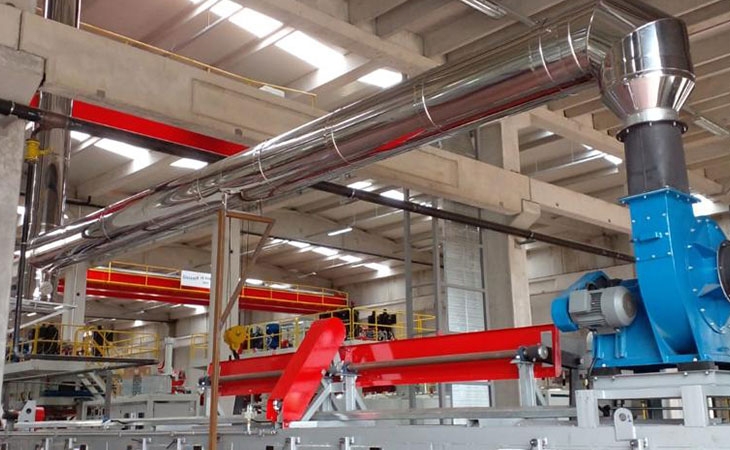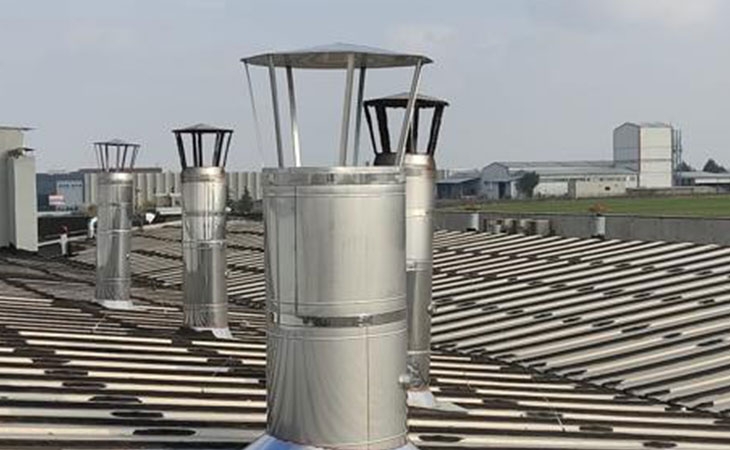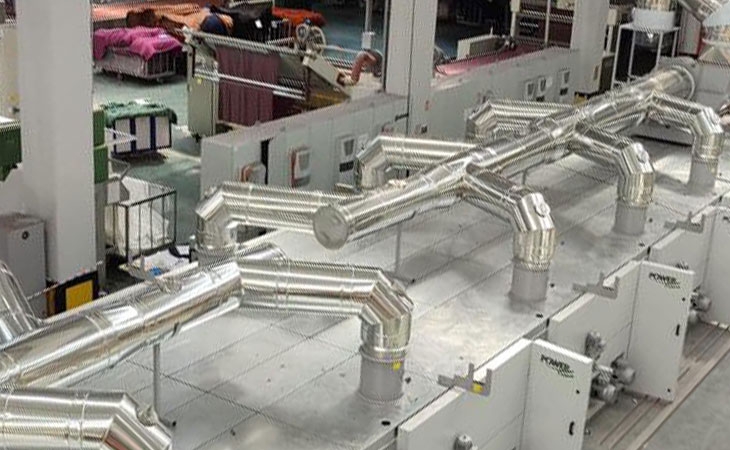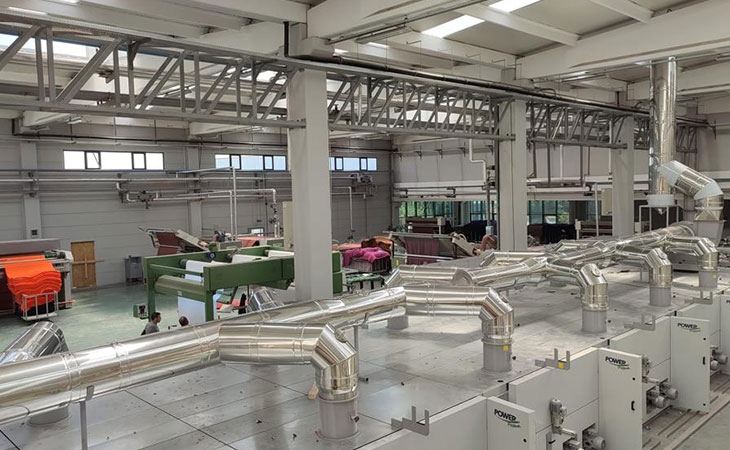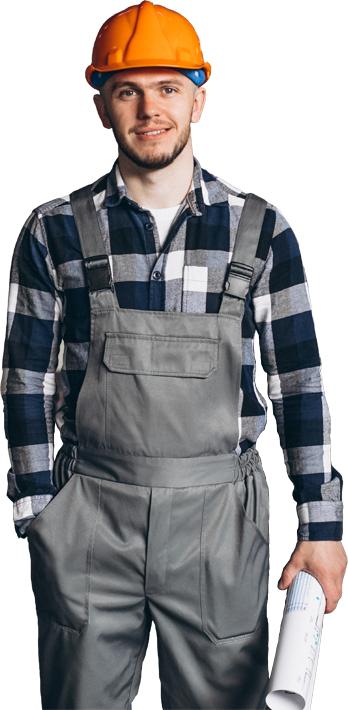With the development of the industry, the construction of steel chimneys began to gain momentum. The fact that steel chimneys are more advantageous compared to concrete chimneys has caused them to become preferred, especially in applications where chimney heights increase. Steel chimney systems can be made in various constructions, the same external geometric shapes and sizes according to their intended use. In this study, we will talk about the current technologies used for the production of steel chimneys and the types of steel chimneys, their design, design, manufacture and application areas.
Metal production is increasing day by day due to reasons such as technological developments, population growth and economic growth. In the production process of the metal, the energy produced in the combustion devices is used, and the smoke gases formed as a result of this process must be discharged into the atmosphere. We need chimneys to dispose of smoke gases, but especially in industrial boiler applications, criteria such as fire resistance and structural robustness, as well as the efficient operation of the system, become extremely important.
Therefore, for a chimney;
- Determination of cross-section,
- Determination of height,
- Selection of the material to be used,
- Its construction is very important [7].
Design Criteria of Steel Chimneys
A steel chimney is a building material that safely discharges smoke gases resulting from combustion into the atmosphere or provides the fresh air necessary for the combustion of industrial waste gases.
Chimneys of industrial boilers and plants can be made of steel, concrete and brick. In recent years, brick chimney applications have disappeared except for special processes. The cross-section and height calculation of steel chimneys are made according to TS EN 13384-1 and TS EN 13384-2, and their manufacturing and assembly are made according to TS EN 13084-7 and Eurocode 3 standards. Industrial chimney design should also take into account the
Regulation on the Control of Industrial Air Pollution.
Advantages and Disadvantages of Steel Chimneys
Advantages of Steel Chimneys
- Since the inner surface of the chimney is not rough, the friction loss of the chimney is small.
- Since the wear problem is at a very low level, high flue gas speeds can be reached.
- It can be manufactured in small diameters.
- There is no possibility of leakage.
- Traction is provided quickly because the inside of the chimney heats up quickly.
Disadvantages of Steel Chimneys
- It is not resistant to outdoor conditions such as concrete and brick chimneys.
- It is not resistant to corrosion. Require extra processing, such as sandblasting and painting.
Classification of Steel Chimneys
Steel chimneys are classified according to the number of walls and the shape of the foundation (standing).
1. Number of Walls
- Single Wall Chimneys
- Double Wall Chimneys
2. According to the Form of Establishment (Standing)
- Free-Standing Chimneys
- Stretched Chimneys
- Supported Chimneys
Features of Steel Chimneys
1- Material
It is accepted to use the steels in TS EN 13084-7 standard and given in Table 1-4. It is also acceptable to use other steels in accordance with EN 13084-6, Article 4.
Coating systems shall comply with EN 13084-1, EN 13084-6 and EN 1993-3-2. All coatings must be applied according to the material manufacturer's instructions. The insulation material shall comply with the requirements given in EN 13084-1, Clause 4.4. The cladding material must be suitable for the environment to which it will be exposed.
2- Construction
The construction is the operating conditions that determine how the chimney connections are made with each individual part. In particular, thermal, chemical and mechanical effects must be taken into account.
Carrier Chimney, Connections and Openings: The wall thickness of waste gas pipes and other construction parts should be at least 1.5 mm and corrosion increase should be considered for surfaces in contact with waste gas. The thickness of the carrier chimney made of carbon steel with corrosion protection must be at least 5 mm. The screw connections of the carrier parts to be checked for operational strength must be realized as pre-stressed connections. Pre-stressed connection feature is not required for anchor bolts. Non-prestressed threaded connections and anchor bolts must be secured against nut loosening.
Gas Tightness and Thermal Insulation: The joints of internal pipes in double-walled chimneys and waste gas (carrier) pipes in single-walled chimneys must be gas-tight. If the condensate of flue gases may cause corrosion of steel, the thermal insulation of parts through which flue gases pass must be done in such a way that the acid dew point temperature does not fall below it.
Insulating materials should not slip, fall and overlap. The formation of a thermal bridge must be prevented.
The temperature of the metal in contact with the smoke gas should be controlled according to the highest estimated smoke gas temperature. The following design parameters are taken into account for this control:
- The highest predicted outdoor temperature
- Zero wind speed
Flue Gases at High Temperatures and Chimney Fire: In the case of an uninsulated chimney, the metal temperature of the chimney is approximately the average of the temperature of the gas passing through it from 5 m / s to 15 m / s with the outside air temperature. If the smoke gas velocity is over 15 m / s or if an insulated chimney is built, heat transfer calculations must be made to find the temperature of the chimney metal. If the calculated metal temperature is close to the temperature limits of the metal, there will be no oxidation. In this case, it is important to use the appropriate metal [1].
Chimney fires occur for the following reasons:
- Disposal of unburned fuels by flue
- Soot, sulfur and other wastes
Foundation and Anchoring: The foundation of the chimney should be protected from thermal and chemical effects. Water and floors that damage concrete should be taken into account in the construction of concrete pedestals. The surfaces of the steel parts in contact with the concrete must be at least 30 cm above the ground level.
Equipment: a climbing ladder should be made on steel chimneys higher than 6 meters and safety measures should be taken against the fall of personnel. The external staircase should start at a height of 4 meters from the floor or 1 meter from the roof of the building. The December of steps on the stairs should be the same up to the chimney exit.
Corrosion: The effect of sulfuric acid formed by the condensation of sulfur oxides in smoke gases on the chimney walls is the most common corrosion state formed in chimneys.
The condensation temperature of sulfuric acid is about 65oC. The smoke gas temperature should be 10oC above the acid condensation temperature under all conditions.
Chlorides are found in many solid and liquid fuels. If free chloride ions come into contact with water vapor, hydrochloric acid occurs. The highest condensation temperature of hydrochloric acid is 60oC.
If the smoke gas temperature drops below this temperature, serious corrosion problems occur [1].
Precautions to be taken against corrosion caused by smoke gases:
- Protection against corrosion by insulation, coating or outer covering
- Safe sizing by adding corrosion increase to the thickness of the hair

